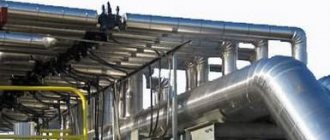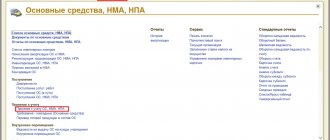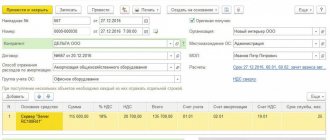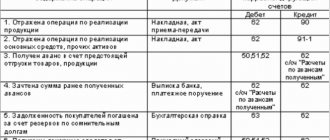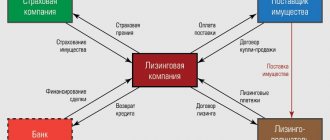OS re-evaluated: main points
The possibility of additional valuation of fixed assets, as well as their markdown, is given in clauses 14–15 of PBU 6/01 “Accounting for fixed assets”, approved by order of the Ministry of Finance of the Russian Federation dated March 30, 2001 No. 26n. The procedure for revaluing the cost of accepting fixed assets for accounting is carried out so that fixed assets are reflected at a more current current (replacement) cost. The current value is equivalent to a certain amount of money that would have to be paid if a particular item needed to be replaced at the revaluation date.
We list the main rules for revaluation (devaluation or revaluation of fixed assets):
- Such a procedure is allowed only once a year, no more;
- the procedure is done for a group of similar objects;
- if the procedure is performed once, it should be done every year thereafter;
- At the same time, the cost of fixed assets (initial or current) and depreciation are revalued.
For information on how to determine the amount by which depreciation is adjusted, read the article “Revaluation of fixed assets in 2016–2017 - transactions”.
The essence of revaluation of fixed assets
The property of an enterprise changes its value over time as a result of wear and tear (physical and/or moral). Market processes occur in parallel, changing the price of various assets at different speeds: real estate, equipment, tools, vehicles, etc. The revaluation is carried out precisely in order to bring these data to a single indicator.
The dynamics of the market value of assets is very uneven, it is difficult to assess from the point of view of certain factors, therefore the value of property at any given moment does not reflect its real price in modern market conditions. Hence, significant distortions in various asset parameters are possible:
- cost;
- depreciation charges;
- profitability of funds;
- bases for taxation.
So, revaluation of an organization’s fixed assets is a clarifying measure to bring the residual value of assets to the level of their actual price on the market, that is, establishing the full price that would be needed to restore or renovate them to their original state in modern realities.
FOR EXAMPLE. Two years ago, the company purchased new equipment that cost 50,000 rubles. Over two years, it lost 7 thousand rubles as a result of depreciation. Thus, its residual value according to accounting documents will be 43 thousand rubles. But as a result of certain market processes (the manufacturer released an improved model), the real cost of such equipment of a given level of wear on the market is only 35 thousand rubles. This means that today it can be sold for exactly this amount. It is necessary to carry out a revaluation, as a result of which this equipment will be reflected on the balance sheet at a cost of 35 thousand rubles, which is its real market price, reliable for financial accounting.
How is the revaluation of fixed assets for production purposes reflected: accounts used for revaluation
Let's move on to accounting entries for additional valuation of fixed assets. To revaluate fixed assets, account 83 “Additional capital” is used if this procedure is carried out for the first time.
| Dt | CT | Description |
| 01 | 83 | An entry was made for the amount of increase in the value of fixed assets: an additional valuation of fixed assets was carried out |
| 83 | 02 | A posting has been made for the amount of change in depreciation |
If there is a subsequent revaluation, then it is necessary to look at whether there was an additional or devaluation in previous periods. If the first option, then the entries are similar; if a markdown occurred, then the amount of the revaluation should adjust it, reflecting it as other income.
| Dt | CT | Description |
| 91.2 | 01 | The amount of markdown in previous periods was recorded |
| 02 | 91.1 | A change in depreciation in previous periods was recorded during the writedown of fixed assets |
| 01 | 91.1 | An increase in the cost of fixed assets was recorded due to the amount of markdown of the previous year |
| 91.2 | 02 | An increase in depreciation was recorded due to the amount of its adjustment during markdown last year |
| 01 | 83 | If the amount of the revaluation exceeds the amount of last year’s depreciation, then the remainder is charged to additional capital |
| 83 | 02 | If the amount of the revaluation exceeds the amount of last year’s depreciation, then the depreciation adjustment also occurs in correspondence with the additional capital account |
We examined how the revaluation of fixed assets for production purposes is reflected. For other fixed assets, you can open a separate sub-account for account 83 (for example, if the organization owns a significant number of fixed assets of social significance).
Postings for markdowns occurring after revaluation in previous periods will look like this:
| Dt | CT | Description |
| 83 | 01 | A decrease in the cost of fixed assets was recorded due to the value of last year’s revaluation |
| 02 | 83 | A decrease in depreciation was recorded due to the amount of its adjustment during last year’s revaluation |
| 91.2 | 01 | If the amount of the markdown exceeds the amount of last year’s revaluation, then the balance goes to the account of other income and expenses |
| 02 | 91.1 | If the amount of the depreciation exceeds the amount of last year's revaluation, then the depreciation adjustment also takes place in the account of other income and expenses |
Accounting for revaluation of goods
Based on the specific economic situation and the conditions of interaction with other market participants, retail trade organizations can revaluate (change prices) goods in the following cases:
- changes in market conditions;
- changes in demand for goods;
- deterioration in the quality characteristics of goods (obsolescence of models and styles, deterioration of presentation, partial loss of properties, etc.);
- moral obsolescence of these values.
Revaluation of goods can occur in the direction of lower prices (markdown) and in the direction of increase (revaluation). The selling price of goods changes based on the order of the head of the organization. In accordance with the Law of the Russian Federation of June 18, 1993 N 5215-1 “On the use of cash registers when making cash settlements with the population,” changing the price of goods by crossing out and correcting the price tags is not allowed. Therefore, if a product is sold at new prices, price tags for it are issued anew.
Goods in retail trade are accounted for at purchase prices (acquisition cost minus VAT) or sales prices, including trade margins, VAT and sales tax amounts.
Initial database setup
On the “Administration” tab:
- in the “Item Settings” section, set the “Product Quality” flag
Entering master data
Let’s enter the organization: “Techno”, for it we set the cost estimation method, taxation system, bank account, cash register cash register (with the type autonomous cash register register) and the organization’s cash register.
Let's create an Item that will be stored in the warehouse, let's call it “TV”.
Let's create a Line of Business (Finance tab) - "Wholesale Sales" and set up the distribution of sales by line of business:
Let's add a new Expense Item - “Markdown of equipment”, distribution - to the area of activity:
Let's introduce a new warehouse into the system - “Wholesale”:
For the supplier, create a new agreement, where you must specify “Register supplier prices automatically”:
Registration of goods receipt
To receive goods, enter the receipt document:
And, as usual, don’t forget to enter Pricing based on receipt:
Reflection of markdowns in the warehouse
After some time, it turned out that two TVs had scratches on the body. Let's reflect this in the program.
Let's create an Inventory Order (Warehouse tab):
Let's enter the Recalculation of goods (Warehouse tab, item Recalculation of goods), where we indicate that there are 8 units of the proper product in the warehouse, and 2 of the discounted product:
Registration of sale of non-discounted goods
We will formalize the sale of non-discounted goods using a sales document.
Generation of financial results
To obtain financial results, you must enter the document Calculation of the cost of goods (Finance tab, Regulatory documents item):
Revaluation of goods can affect both a decrease and an increase in value. Each situation has its own accounting procedure. Revaluation is especially affected by the prices in which goods are recorded: sales or acquisitions.
Is it possible to re-evaluate a newly purchased OS?
Revaluation of groups of similar fixed assets is possible only once a year or may not be carried out at all. At the same time, clause 15 of PBU 6/01 specifically indicates that this procedure is organized only at the end of the reporting year. Therefore, if a company bought a new fixed asset this year, it belongs to the group of revalued ones, according to internal documentation, and the economic situation is such that the cost of the fixed asset has changed significantly, then at the end of the reporting year an additional valuation (discount) of the newly purchased fixed asset is possible.
For more information on the revaluation of fixed assets, read our article “Why is the revaluation of fixed assets necessary?”
Depreciation of fixed assets is possible due to what
Hello, in this article we will try to answer the question "".
You can also consult with lawyers online for free directly on the website.
Organizations can revaluate fixed assets (clause
15 PBU 6/01 “Accounting for fixed assets”, approved. by order of the Ministry of Finance of Russia dated March 30, 2001 No. 26n; hereinafter referred to as PBU 6/01). The main goal of this event is to determine the real value of fixed assets in accordance with their market prices and reproduction conditions on the date of revaluation.
But it should be taken into account that fixed assets that have been revalued once must be revalued regularly in the future (clause
15 PBU 6/01, clause 44 of the Methodological Instructions approved by Order of the Ministry of Finance of Russia dated October 13, 2003 No. 91n). What is the revaluation of fixed assets, why is it needed and how its results are displayed in the company’s financial statements - the answers to these questions can be found in the presented article.
Contents: It should be noted that if the organization has decided not to revaluate fixed assets, then in the financial statements they will be displayed at book value, reduced by the amount of accrued depreciation and impairment losses (if any). The amount of the markdown, that is, the amount by which the value of the fixed assets decreased as a result of revaluation, is taken into account as part of other expenses in the debit of account 91/2. The wiring looks like: D91/2 K01.
The amount of depreciation of an item of fixed assets as a result of revaluation is included in the financial result as other expenses. The amount of depreciation of an object of fixed assets is included in the reduction of the organization’s additional capital formed from the amounts of the additional valuation of this object carried out in previous reporting periods.
Due to the fact that, according to clause 15 (paragraph 3) of PBU 6/01 “Accounting for fixed assets”, the revaluation of an object of fixed assets is carried out by recalculating its current (replacement) cost and the amount of depreciation accrued for the entire period of use of the object, and in the conditions of the problem (see letter) neither the initial (or replacement) cost nor the amount of accumulated depreciation are indicated, then for the correctness of the example, we will have to introduce these indicators, in addition to the basic ones, into the initial conditions.
It is up to the company to decide whether to revalue the property or not. However, it is worth remembering: if a company has revalued its assets once, then in the future it should be carried out regularly, but not more than once a year.
This condition is necessary to ensure that the cost of these fixed assets, at which they are reflected in accounting and reporting, does not differ significantly from the current (replacement) cost. The concept of materiality is given in paragraph 44 of the “Methodological guidelines for accounting for fixed assets” (approved.
by order of the Ministry of Finance of Russia dated October 13, 2010.
No. 91n, hereinafter referred to as Instructions No. 91n) and discussed with an example. Let's bring him. Revaluation can only be carried out by commercial organizations, which themselves decide when they will do this and which objects to revaluate.
Revaluation of fixed assets according to new rules (with examples)
Important
Postings for revaluation of fixed assets: Amount Debit Credit Name of transaction 5000 01 83 Revaluation of fixed assets 1000 83 02 Revaluation of accrued depreciation Example of revaluation of fixed assets (markdown): Fixed asset with an original cost of 20,000. Amount of accrued depreciation 4000. Average market value for similar fixed assets 16,000 (decreased for 4000 rubles).
Wear rate = 4000*100% / 20000 = 20%. Depreciation as a result of revaluation: 16,000 * 20% / 100% = 3,200 (decreased by 800). Postings for markdown of fixed assets: Amount Debit Credit Name of transaction 4000 91/2 01 Markdown of fixed assets 800 02 91/1 Markdown of accrued depreciation At the end of the topic, I would like to note that all changes that arose as a result of the revaluation of fixed assets must be entered into the inventory card of the object.
Depreciation of fixed assets
Contents As a result of recalculation, the value of an asset may either increase or decrease.
In the first case, we talk about additional valuation, in the second - about depreciation of the object. Revaluation accounting scheme: The Albatross organization has a fixed asset worth 100,000 rubles.
At the time of revaluation, accrued depreciation amounted to RUB 25,000. As a result of the revaluation, the cost of the fixed assets was determined to be 110,000 rubles. When the cost of the OS increases, we receive an additional valuation.
Consequently, it will be necessary to recalculate accumulated depreciation.
By calculating the depreciation rate, we can overestimate the amount of depreciation:
- 25,000 rub./100,000 rub. = 25%;
- that is, 110,000 rubles * 25% = 27,500 rubles.
When revaluing fixed assets, the organization's accountant made the following entries: Dr Ct Description of transaction Amount, rub. Document 01 83 Reflection of the cost of revaluation (110,000-100,000=10,000) 10,000 Accounting certificate 83 02 Reflection of recalculation of depreciation (27,500 - 250,000 = 2,500) 2,500 Accounting certificate Fixed asset worth 200,000 rubles. and accumulated depreciation of 50,000 rubles.
was revalued in accordance with the market value of similar objects. The new cost is determined to be 160,000 rubles. When the cost of the OS decreases, we get a markdown:
- We determine the degree of wear: 200,000 rubles/50,000 rubles = 25%;
- We calculate the new amount of depreciation: 160,000 rubles. * 25% = 40,000 rub.
Postings for depreciation of fixed assets in accounting: Dt Ct Description of transaction Amount, rub.
Document 91.2 01 Reflected decrease in the value of the object (200,000-160,000) 40,000 Accounting certificate 02 91.1 Reflected decrease in accrued depreciation (50,000 - 40,000) 10,000 Accounting certificate Revaluation of fixed assets can help reduce the tax burden.
In particular, reduce the amount of property tax. Revaluation of fixed assets is carried out only in accounting, therefore, after it is carried out, differences inevitably arise with tax regulations, which also affects income tax. Instructions for accounting of fixed assets, approved by Resolution of the Ministry of Finance of the Republic of Belarus dated April 30, 2012 No. 26 (hereinafter referred to as Instruction No. 26); – fixed assets listed on account 03 and related to investment real estate, – p.
13 Instructions for accounting of investment real estate, approved by Resolution of the Ministry of Finance of the Republic of Belarus dated April 30, 2012 No. 25 (hereinafter referred to as Instruction No. 25); – unfinished construction projects and uninstalled equipment – clause 76 of the Instructions on the procedure for determining the cost of a construction project in accounting, approved by Resolution of the Ministry of Construction and Architecture of the Republic of Belarus dated May 14, 2007 No. 10 (hereinafter referred to as Instruction No. 10). Budgetary organizations reflect the results of revaluation as of January 1, 2014.
the same as in previous years - in accordance with clause 36 of the Revaluation Instructions. The condition is given in the table: As stated above, the balance of the additional fund for the object is a “collapsed” result of previous revaluations, i.e. the difference between the result of a change in the original cost and the result of a change in the amount of depreciation.

